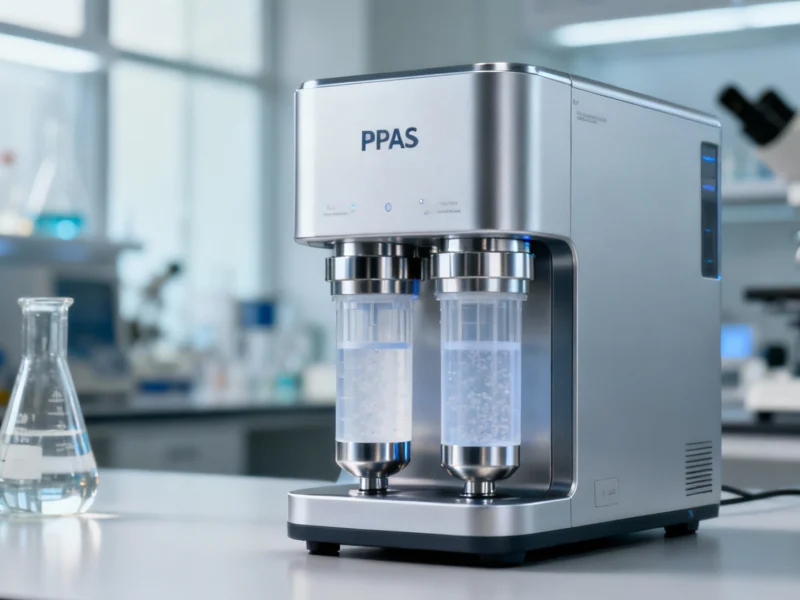Rice University has unveiled a revolutionary eco-friendly PFAS removal technology that not only captures toxic forever chemicals with record speed and efficiency but also safely destroys them—achieving what has eluded scientists for decades. This breakthrough comes at a critical time as PFAS contamination threatens drinking water supplies worldwide, offering a practical solution to one of the most persistent environmental challenges facing global communities.
Global Collaboration Yields Environmental Breakthrough
Developed through an international partnership between Rice University and leading South Korean institutions, this innovative approach represents a significant advancement in environmental remediation technology. The research team was led by postdoctoral researcher Youngkun Chung under the supervision of Professor Michael Wong at Rice’s George R. Brown School of Engineering, with crucial contributions from Professors Seoktae Kang of the Korea Advanced Institute of Science and Technology (KAIST) and Keon-Ham Kim of Pukyong National University.
Understanding the PFAS Problem
Per- and polyfluoroalkyl substances (PFAS) are manufactured chemicals originally developed in the 1940s and prized for their remarkable resistance to heat, oil, and water. These properties made them ideal for numerous applications including:
- Non-stick cookware and food packaging
- Waterproof textiles and outdoor gear
- Firefighting foams and industrial applications
However, this same durability has created a massive environmental challenge, as PFAS do not break down naturally and accumulate in water, soil, and even human tissue. The toxicity concerns associated with PFAS exposure include serious health risks such as cancer, liver damage, hormonal disruption, and immune system impairment, according to recent analysis of environmental health data.
Revolutionary LDH Material Technology
The breakthrough centers on a layered double hydroxide (LDH) material composed of copper and aluminum—first developed at KAIST in 2021. During extensive experimentation, Chung discovered that a specific nitrate-based LDH compound could capture PFAS with unprecedented efficiency. Testing revealed extraordinary performance metrics:
- Absorbs PFAS over 1,000 times more effectively than traditional adsorbents
- Purifies contaminated water 100 times faster than commercial carbon filters
- Functions effectively across various water sources including tap, river, and industrial wastewater
The material’s exceptional performance stems from its unique atomic structure, where precisely arranged layers and subtle charge differences attract and trap PFAS molecules almost instantly. Additional coverage of advanced materials science confirms this represents a significant departure from conventional approaches.
Complete PFAS Destruction Capability
While conventional PFAS cleanup technologies like activated carbon filters or ion-exchange resins merely capture the chemicals temporarily, the Rice-led team’s innovation achieves complete destruction of the forever chemicals. Working with Rice professors Pedro Alvarez and James Tour, the researchers developed a system that not only removes PFAS from water but breaks them down into harmless components.
This dual capability addresses the major limitation of existing technologies, which often produce secondary waste that requires additional disposal measures. The complete technical details are available in the team’s research publication in Advanced Materials, demonstrating the scientific rigor behind this development.
Broader Environmental and Economic Implications
The timing of this breakthrough coincides with increasing global attention to environmental technologies and sustainable solutions. As industry experts note in related analysis of emerging markets, environmental remediation technologies represent a growing sector with significant potential. The successful development of practical PFAS removal technology aligns with broader trends in environmental innovation and sustainable engineering.
This advancement comes as other sectors also demonstrate technological progress, with financial institutions reporting strong performance in sustainability-focused investments and artificial intelligence companies expanding into environmental applications. The convergence of materials science, environmental engineering, and sustainable technology points toward increasingly integrated solutions for global challenges.
Path Forward for Water Remediation
The Rice University team’s PFAS removal technology represents more than just a laboratory achievement—it offers a scalable, practical solution for addressing one of the most pressing environmental health challenges of our time. With the ability to function efficiently in both stationary and continuous-flow systems, the technology has immediate applications for:
- Municipal water treatment facilities
- Industrial wastewater management
- Emergency response to contamination incidents
- Household and community water purification systems
As research continues and the technology moves toward commercialization, this innovation promises to transform how communities worldwide address PFAS contamination and protect water resources for future generations.



